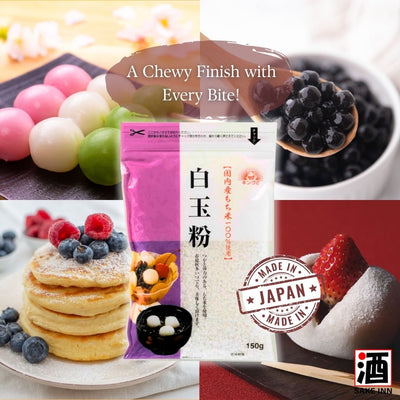How to drink Japanese Sake

Knowing the different types of sake can be simple, but do you know that sake can be elevated by pairing them with a variety of food? In this guide, we will be providing tips for drinking sake and making it a more relatable experience for you!
Taste Profile
To start off, sakes can be classified into four different taste profiles, mainly Aromatic (薰酒), Aged (熟酒), Refreshing (爽酒) and Rich (醇酒). [It is easier to remember it as AARR!]
Sakes high in aroma consist of Aromatic Sakes — Daiginjyo (大吟醸) and Ginjyo (吟醸) — and Aged Sakes. Such sakes can produce fruity, floral and other distinctive types of flavours.
Sakes that are less aromatic include Refreshing Sakes — Honjyozo (本醸造) — and Rich Sakes — Junmai (純米), Kimoto (生酛) and Yamahai (山廃). They hold little to no additional flavour and bring about the pure taste of sakes.

Light body sakes are easier to drink as they are low in viscosity and delicate in nature, carrying clean flavours and giving a water-like mouthfeel. An example would be Honjyozo (本醸造), which is sake with added distilled alcohol crucial for producing its smooth texture.
On the other hand, full-body sakes are thick, and viscous and often have a strong Umami flavour. Examples of such sakes are Junmai (純米), Kimoto (生酛) and Yamahai (山廃), which are sakes fermented with yeast and lactic acid, amplifying the taste of rice and making them less aromatic. This also results in a richer and more complex flavour.
Sake Meter Value (SMV)

Previously mentioned in our Sake Basics Guide, a Sake Meter Value (日本酒度) is used to measure how dry or sweet a sake is. The lower the number, the sweeter the sake and the higher the number, the drier the sake. Do note that different brands with the same SMV may be different from each other. SMV is only intended as a reference for customers to get a rough idea of how dry or sweet a sake might be!
Temperature

Unlike most alcohol, sake is a versatile beverage as it ranges between taste profiles and SMV. Sakes can be served and enjoyed in different temperatures — based on the type of sake and your personal preferences — so it is best for you to experiment with the different ways to drink it! There are mainly four temperatures to enjoy sake: Hot (>50°C), Warm (30-40°C), Room Temperature (~20°C) and Chilled (5-10°C).
Hot / Warm

Honjyozo (本醸造) holds up well with a broad range of temperatures due to its light viscosity. With its clean flavour and smooth, water-like texture, Honjyozo (本醸造) sakes are one of the few sakes that can be savoured hot.
When it comes to warm sake, it is no doubt that Junmai (純米), Kimoto (生酛) and Yamahai (山廃) sake takes on the lead. They are one of the oldest types of sakes made and served traditionally using the natural process of fermentation. They were also originally served warm — and warming suited much better back then — especially during winter.
Room Temperature / Chilled

The good news is that most sakes can be enjoyed at room temperature and chilled!
The highly aromatic and light-bodied Daiginjyo (大吟醸) and Ginjyo (吟醸) sakes may lose their delicate nature at a slightly warm temperature, but also reduce the subtlety of their flavours at a cold temperature. Hence, the recommended temperature to enjoy Daiginjyo (大吟醸) and Ginjyo (吟醸) is cool (~15°C), anywhere between chilled and room temperature.
As mentioned above, Honjyozos (本醸造), Junmai (純米), Kimoto (生酛) and Yamahai (山廃) sakes also work well in room and cold temperatures. Some even show their best side at either of the extremes. Thus, it is really up to one's own personal preferences!
Sake and Food Pairings

Highly Aromatic | Light Body | 5-20°C
Daiginjyo (大吟醸)
Ozeki Osakaya Chobei Daiginjyo Sake (SMV: +4, Alc: 15%) has a rich and fruity aroma along with a delicate flavour. This sake is best served chilled, and pairs really well with sashimi and seafood.
Try it: Ozeki Osakaya Chobei Daiginjyo Sake
Ginjyo (吟醸)
Dewazakura Ouka Ginjyo Sake (SMV: +5, Alc: 15.5%) carries strong fruit fragrances and produces a strong refreshing aftertaste. This sake is best served chilled or at room temperature and is often paired with fruits, meat and seafood.
Try it: Dewazakura Ouka Ginjyo Sake
Refreshing | Light Body | 5 - >50°C
Honjyozo (本醸造)
Ozeki Karatamba Honjyozo Sake (SMV: +7, Alc: 15%) has a rich and crisp flavour. Its dry taste of "Karatamba" can be consumed either chilled or warmed. Meat, cheese and vegetables generally pair well with this beverage.
Try it: Ozeki Karatamba Honjyozo Sake
Rich | Full Body | 5-40°C
Junmai (純米)
Momokawa Junmai Sake (SMV: +2, Alc: 15-16%) has hints of berry, melon and peach. Its complex aromas carry a rich taste and fruity tones that become more apparent when served warm. It is best consumed with vegetables, meat and seafood.
Try it: Momokawa Junmai Sake
Kimoto (生酛)
Kiku-Masamune Kimoto Karakuchi Junmai Sake Pack (SMV: +5, Alc: 15%) is a crisp, distinctive dry sake that holds a rich fragrance. It is best savoured either at room temperature or chilled, and pairs well with vegetables, meat, herbs and spices. Some food recommendations are fried enoki mushroom, spicy si-chuan cuisine, pork chop and beef cubes!
Try it: Kiku-Masamune Kimoto Karakuchi Junmai Sake Pack
Summary
Sakes can be savoured at different temperatures and when paired with different food. Keep in mind that these are only tips to better elevate the flavours of sake! Personal preferences play the biggest part in finding 'the one'. So, the best way to discover the perfect sake is to experiment with it yourself until you find one that suits your palate!
Feel free to start experimenting with sakes to find 'the one'! Kanpai! 🍶
Do check out other guides if you haven't!




















Leave a comment